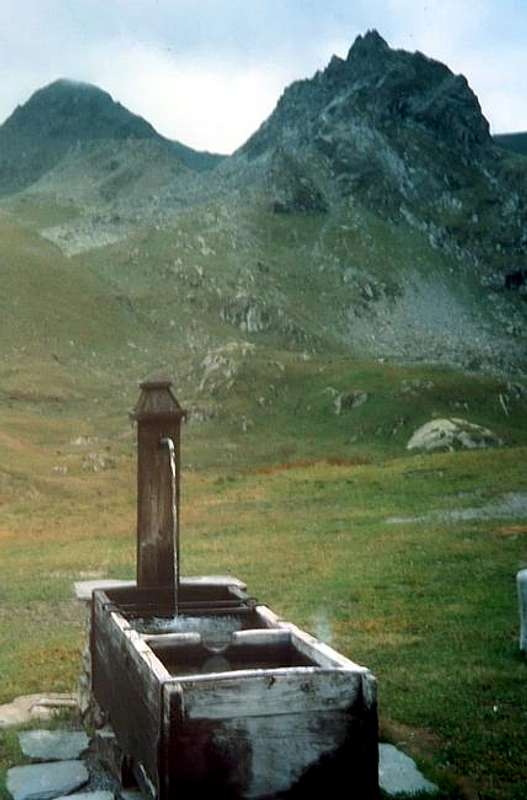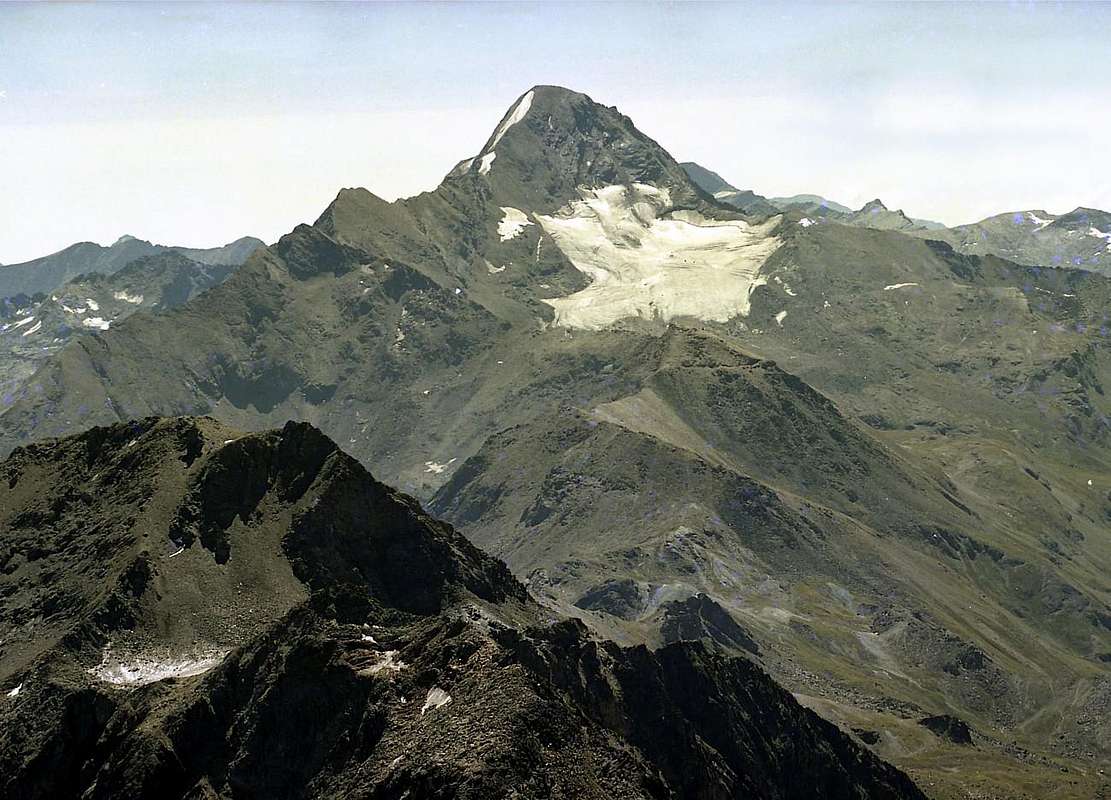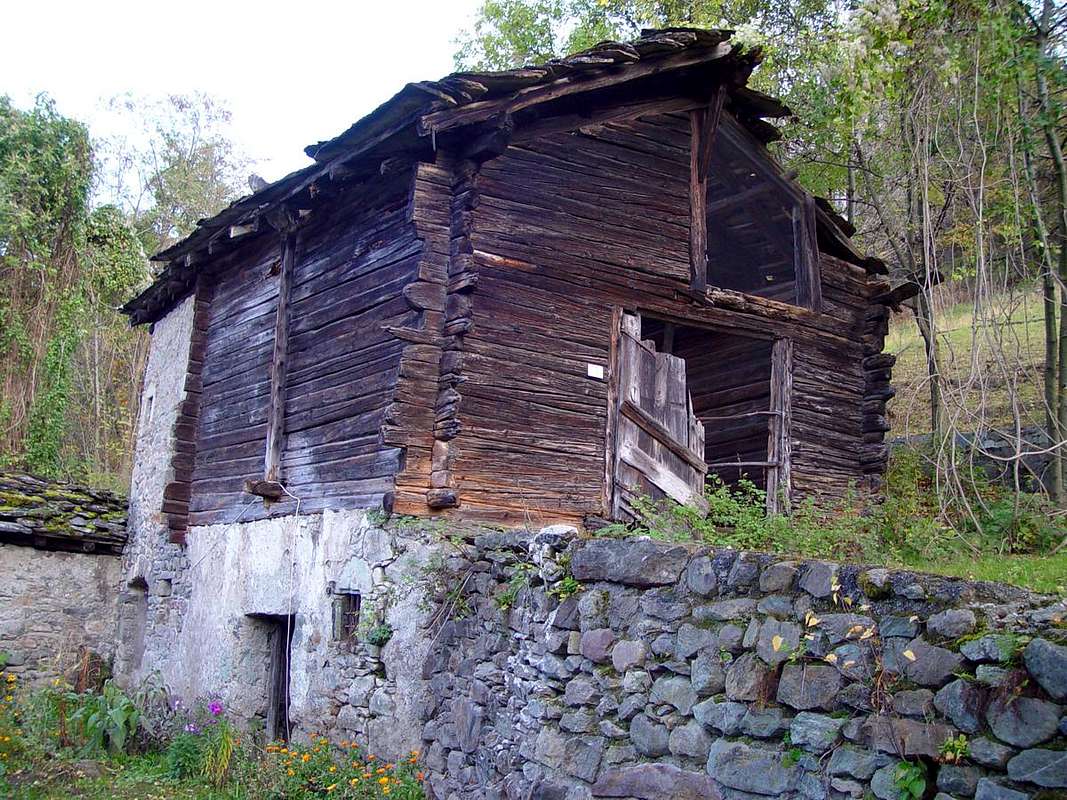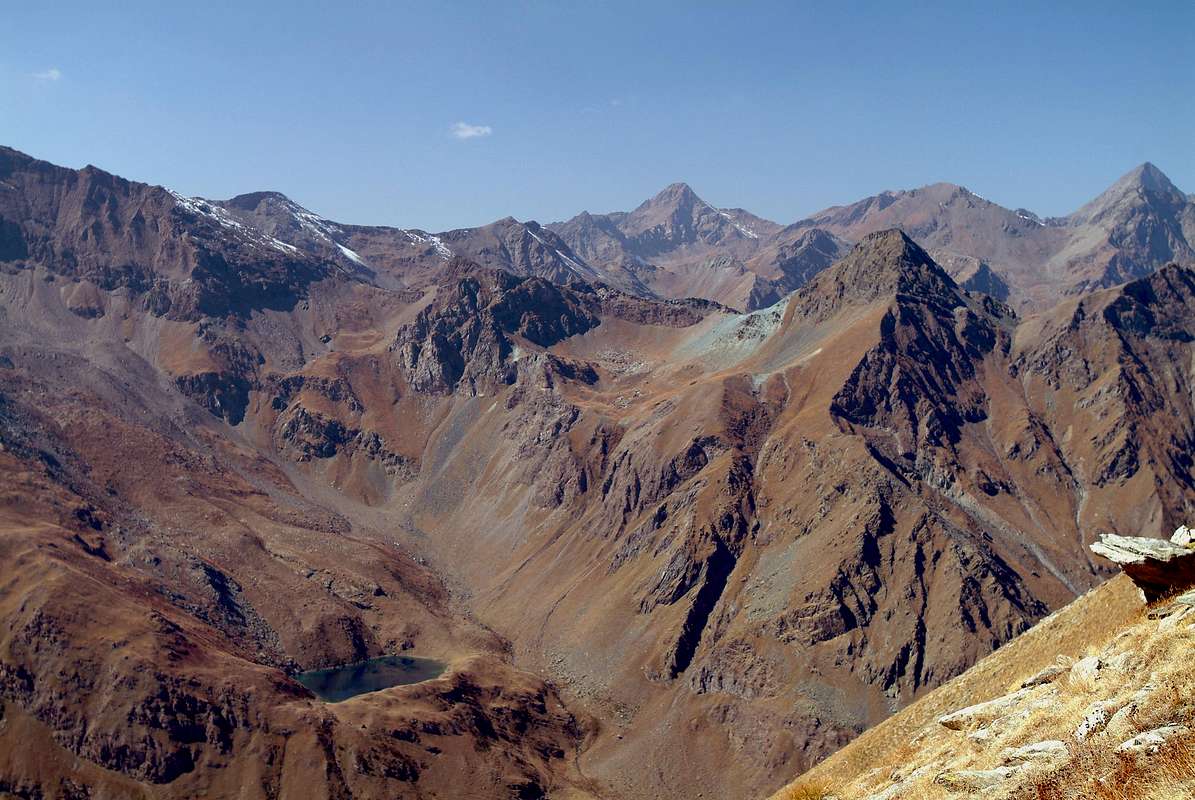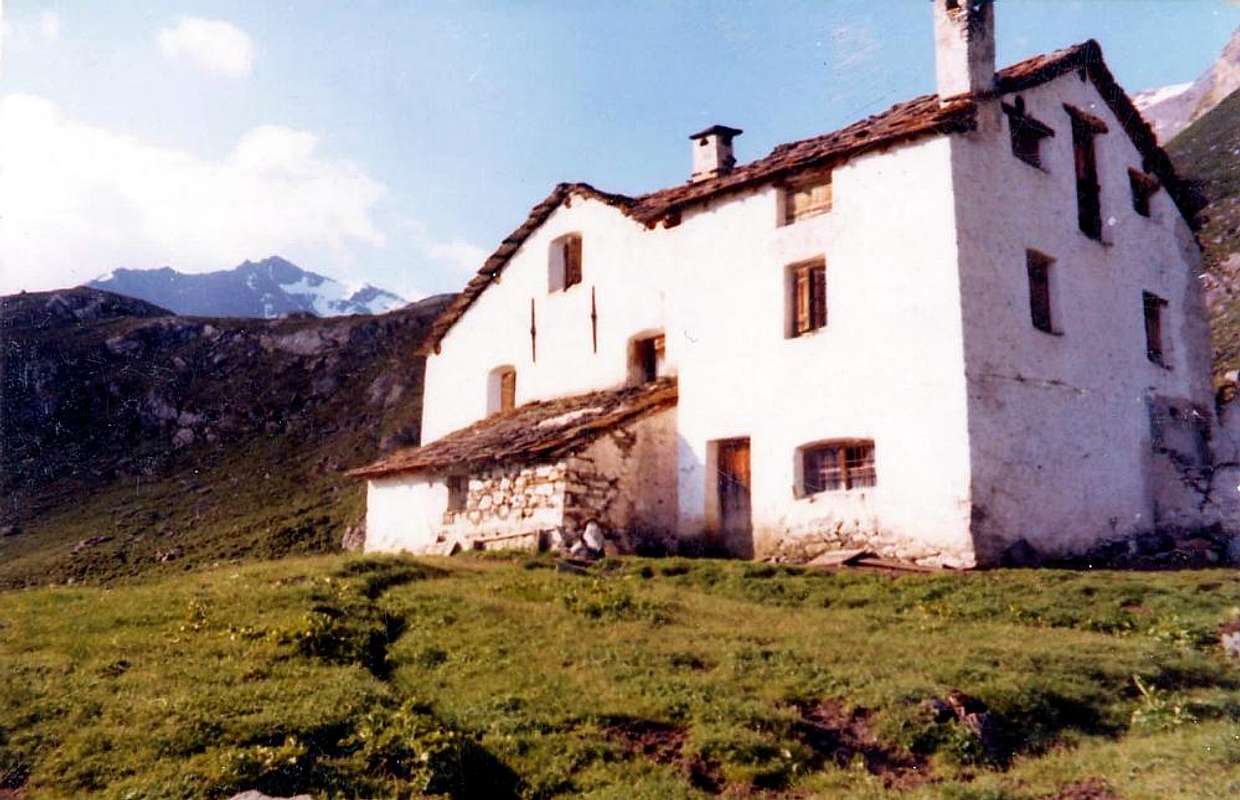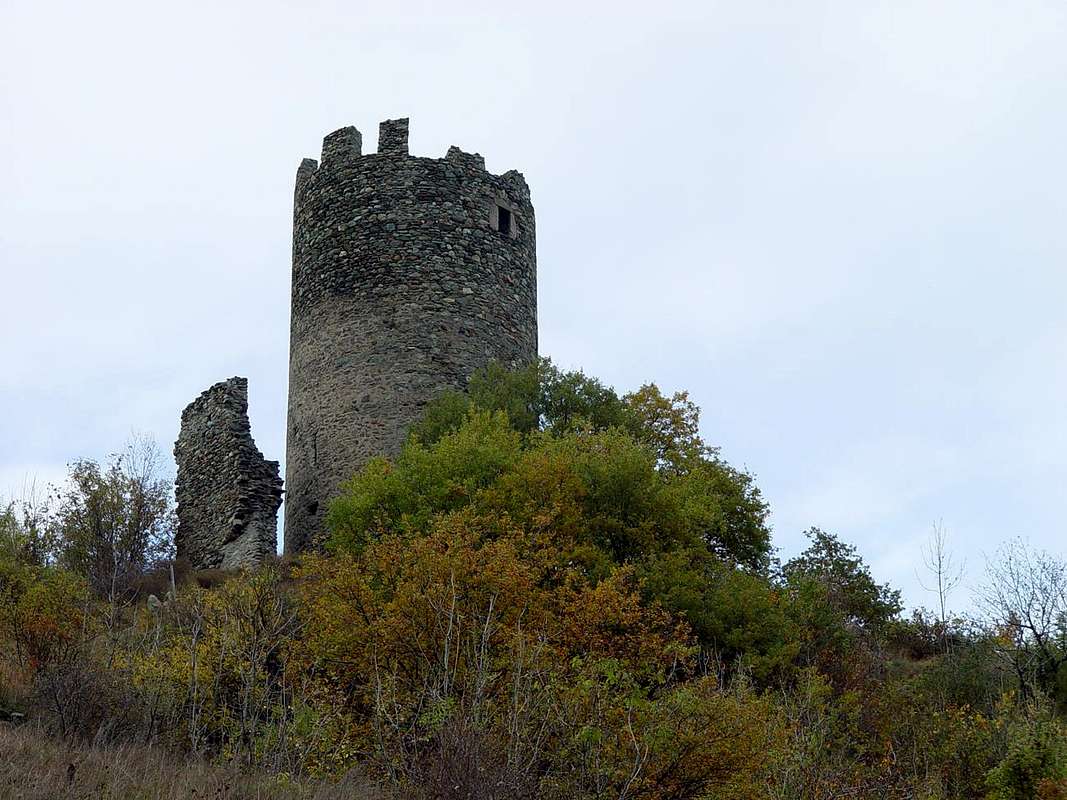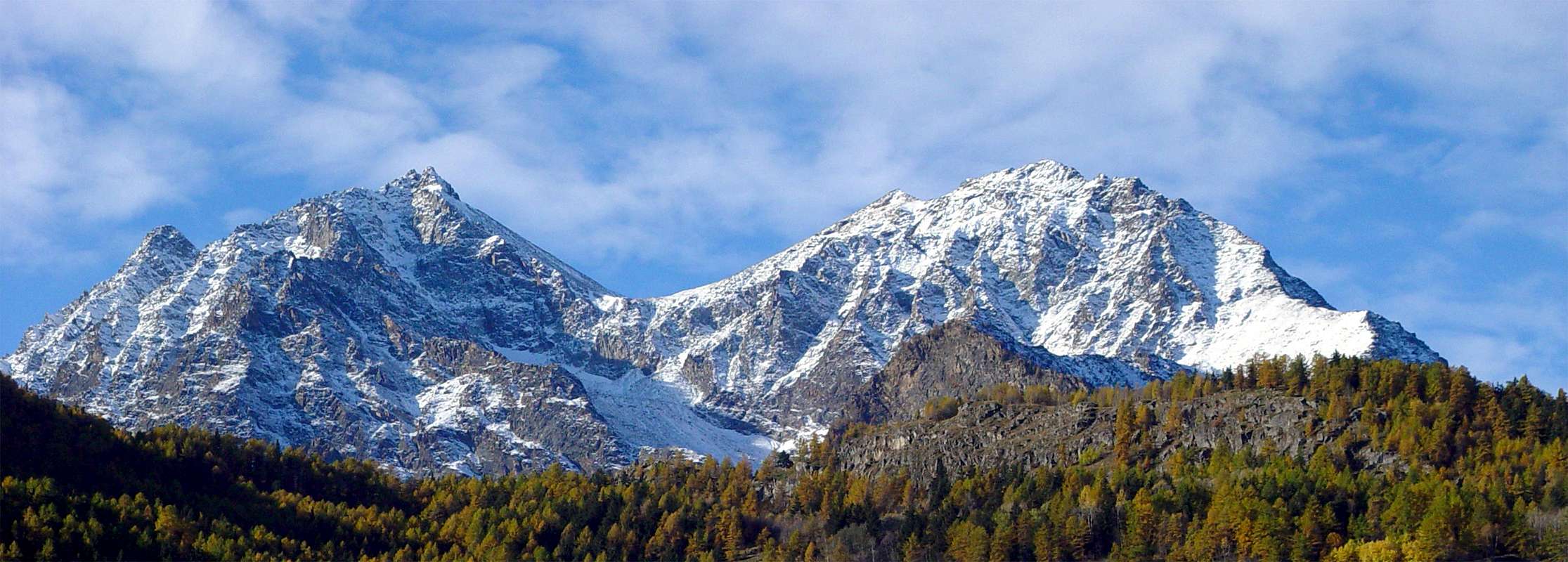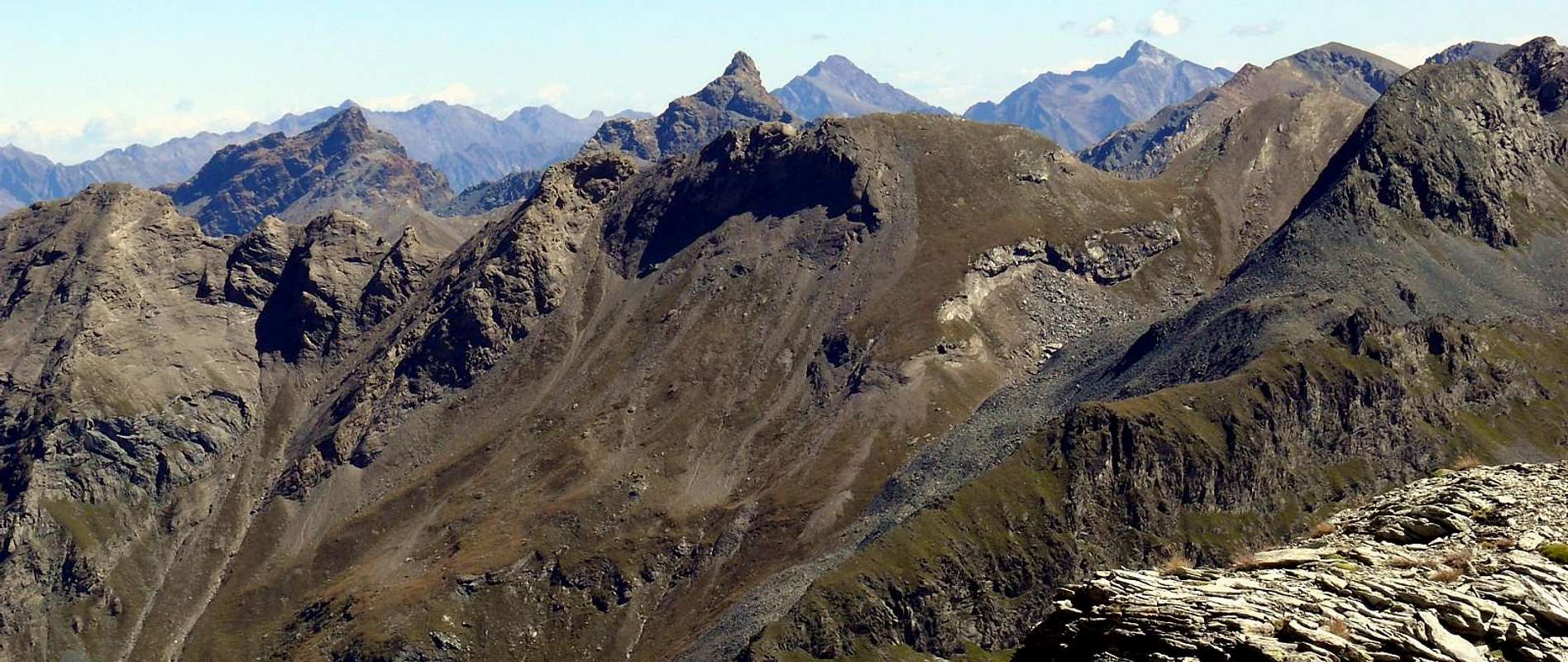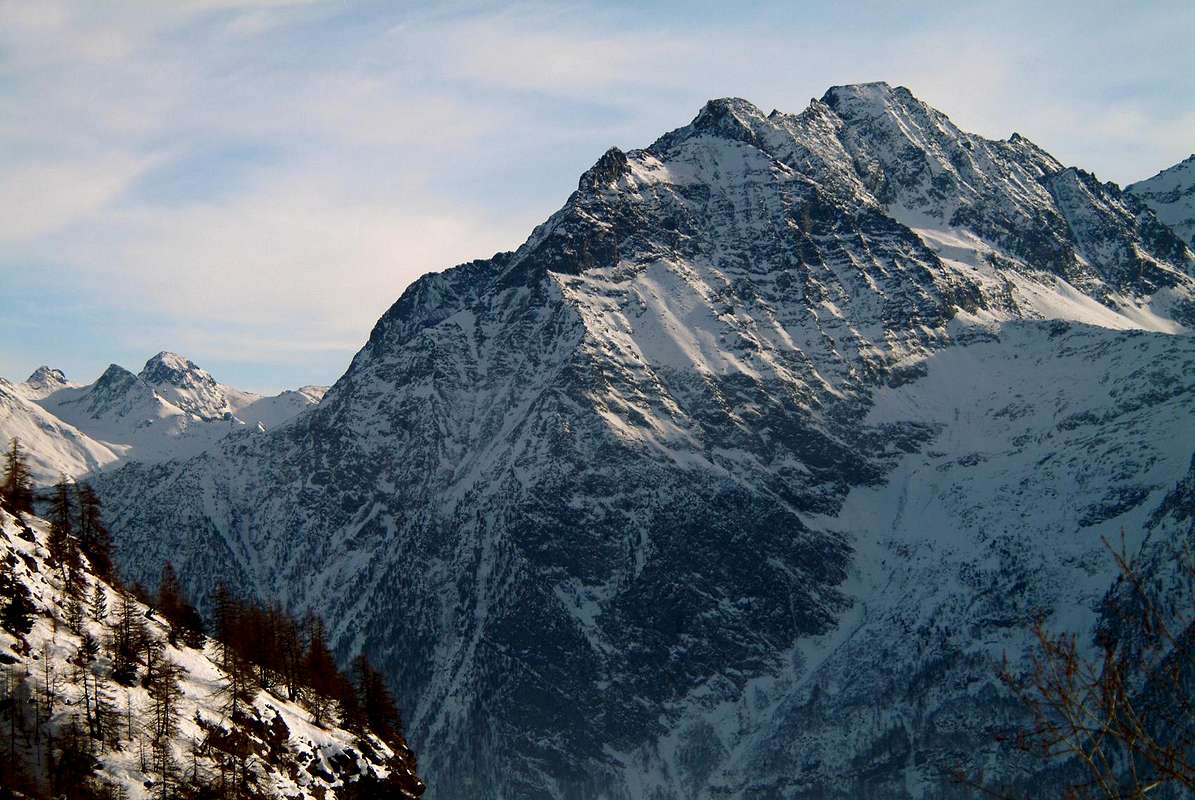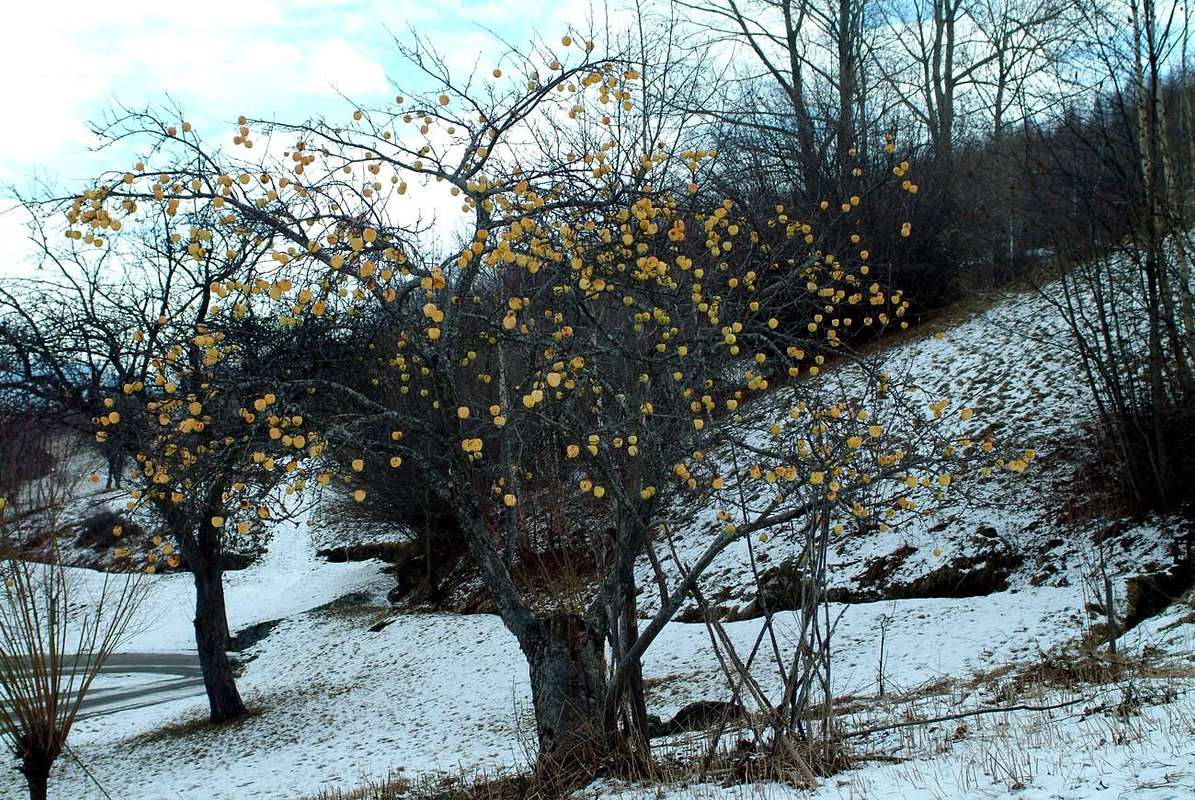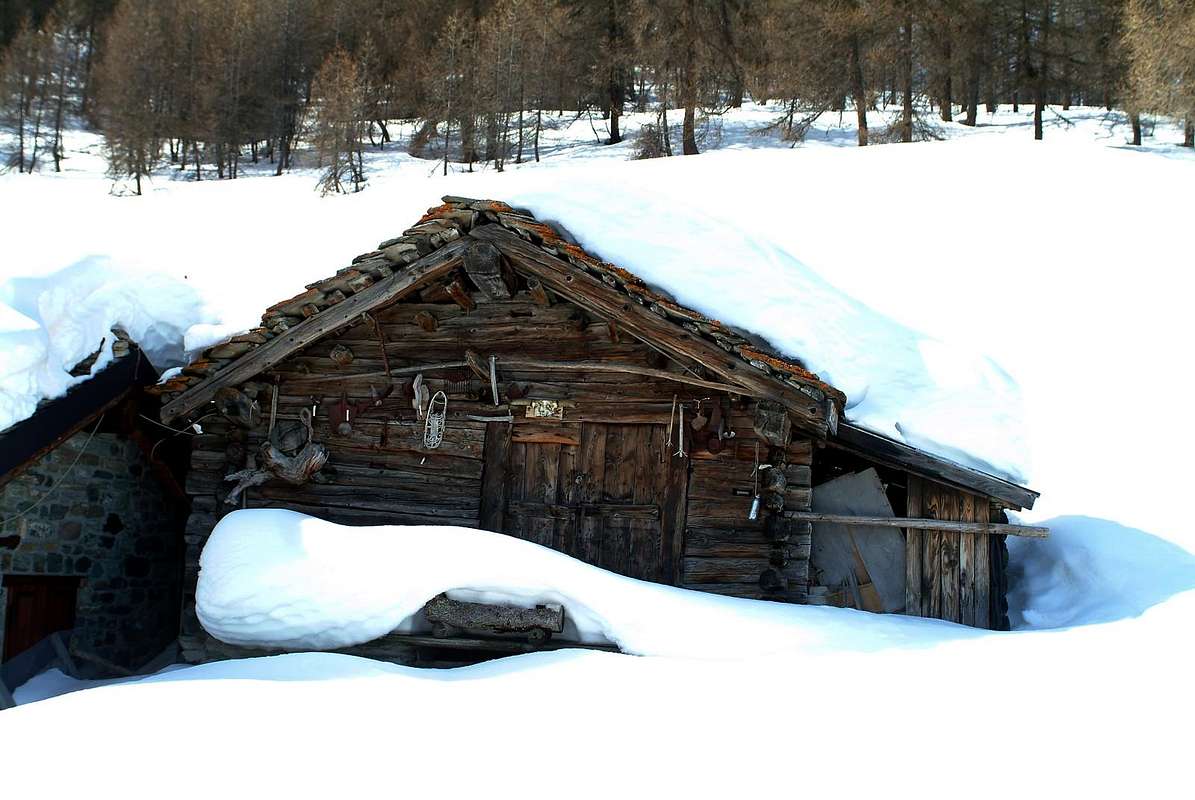-
 7912 Hits
7912 Hits
-
 78.27% Score
78.27% Score
-
 9 Votes
9 Votes
|
|
Area/Range |
|---|---|
|
|
45.73040°N / 7.44841°E |
|
|
Hiking, Mountaineering, Trad Climbing |
|
|
Spring, Summer, Fall, Winter |
|
|
5249 ft / 1600 m |
|
|
Note
La montagna chiama i suoi figli, ed essi rispondono fedelmente al suo appello… Osvaldo Cardellina, Diario alpinistico, 1964-65 Page texts: @ OsvaldoCardellina "Osva", passed away on May 2, 2022. Page owners: Christian Cardellina e Osvaldo Cardellina. Any updates from September 12, 2022: Antonio Giani, page administrator, friend and climbing companion. Testi della pagina: @ OsvaldoCardellina "Osva", scomparso il 2 maggio 2022. Proprietari pagina: Christian Cardellina e Osvaldo Cardellina. Eventuali aggiornamenti dal 12 settembre 2022: Antonio Giani, amministratore della pagina, amico e compagno di salite. |
Hunting Preserve Overview
Vallone o Valle di Saint Marcel? Quest'ampia valle domina ad Oriente della Città di Aosta ed incombe su due Comuni: Fénis e Saint Marcel. Il vertice massimo della medesima é costituito dalla Grande Roise (3.357 m), sita sul più Occidentale dei due spartiacque contenenti la medesima. In realtà questa Sommità risulta più discostata dal Vertice vero e proprio della valle costituito dalla Punta del Tessonet (3.266 m), ove la medesima termina formando due ben definiti spartiacque: ad Ovest appunto quello del Gruppo delle Rouèses, mentre sull'opposto si allunga quello degli Averts, culminante con il Grand (2.991 m) per infine terminare da un lato al Mont Roux (2.530 m) con le Miniere di rame di Chuc-Servette, mentre dall'altro, sempre dopo il Mont Corquet (2.530 m) il divisorio s'allunga a Nord-nordest fino alla Torrasse o Mont Touriasse (1.985 m) ed al promontorio roccioso-boschivo del Mont Saint Julien (1.377 m), con il suo Santuario di San Grato sopra l'abitato di Fénis e l'Eremitaggio di San Giuliano abbarbicato alle pareti rocciose che dominano l'ingresso nella Clavalité. Questa valle é unica nel suo sviluppo partendo dal fondovalle nei pressi di Saint Marcel, ma in realtà si sdoppia nello avvicinamento stradale che "fuoriesce" dal suo percorso naturale; infatti la Strada regionale risale più ad Oriente di questa linea, che segue il corso del Torrente di Saint Marcel, transitando per tutta una serie di piccoli villaggi, con epicentro il Santuario di Plout, posti sulla medio-alta collina alle pendici del Mont Corquet. Anche i confini comunali con lo attiguo Comune di Fénis risultano particolari, poiché non seguono lo spartiacque ad Est, bensì dal Corquet s'indirizzano a valle "tagliando" quasi in verticale la collina verso Settentrione; raggiunti i piccoli Villaggio di Les Druges Alte e Basse (1.600 m, 1.567 m), proseguono poi appena più a Nord-nordovest raggiungendo la Dora Baltea tra la Frazione di Tillier (550 m; Fénis) e quella di Valméanaz (601 m; St. Marcel), giusto di fronte al Comune di Nus oltre il fiume.
This border demarcation, rather atypical and unusual in Aosta Valley, determines that the small Vallone of Pieiller, at the foot of Mont Saint Julien, belongs to the Municipality of Fénis and not more than that of Saint Marcel. Even the highest sector complaint an anomaly with a valley "hinted" that is directed towards Southeast reaching always at the foot of Mont Corquet the Alps Meyes, Plan-de Meyes, Bren and Praz-Premier or Prapremier (1.875m, 1.893m, 1.961m, 2.010m), all now in the former municipality, even though on this side of the divide. This factor means that, in order to gain access to the Valley of Saint Marcel real, must be by Les Druges Alte continue on the road, which becomes from paved to farm and private dirt road Westward reaching the Picnic Area and the subsequent Pastures of Pouria (1.586m) and Vargney, at a warehouse on the edge of the meadows; continuing past is beyond the landfill of the mineral, turn decidedly in the South, entering into the walloon near the Mines of Chuc-Servette (1.591m), at the Eastern foot of Mont Roux. From this point the vallon, always with direction from North to South, after passing a small slope (gate with a sign indicating that the ban on driving) in the private Hunting Reserve Great Avert, currently owned by the Marquis Attilio Turati, already ex Reserve Baron Beck Peckoz Gressoney, runs the entire valley for about ten kilometres, passing the House Hunting Mulàc-St. Louis (1.937m), several pastures and ends in the South nearby the House Hunting Grande Chaux (2.370m) and Southeast Alp Petite Chaux (2.419m), the slopes of the two Averts and Lavòdilèc Hill (2.863m). From here continue to radiate the various paths that reach clockwise, beyond that hill, those of Tessonet (3.051m), St. Marcel or Coronas (2.913m), Vallonet (3.062m) and Leppe (3.110m), immediately after the Summit with the same name (3.305/6m) where do you get the beginning of the small Chain Grande Roise, that separating this vallon from that of adjoining Les Laures, ending above Grand Brissogne.
Getting There
- From TORINO, MILANO, etc: Motorway A5. Exit at IVREA or Quincinetto (PIEDMONT)
- From IVREA Town: in West (Southern side) to Pont Saint Martin, Donnas, Bard, Champdepraz, Pontey, Fénis, Saint Marcel.
- From Fénis (537m) on Pieiller small Vallon towards Le-Pieiller-de-Sermaz, Maison Longue, Le Plany Hamlets (1.075m, 1.112m, 1.174m); through asphalt road) and subsequent connection with La Morgetta(z), Pressunettaz, alternative before Champremier (1.383m) at Les Druges Lower and Upper small Villages (1.567m, 1.600m).
- From Saint Marcel (630m) to Saint Marcel Vallon and Turati Reserve up to the Mulac & Grande Chaux Hunting Houses and Alp (1.937m, 2.370m). Specific Road By SS.26, 15 Km by Aosta Town, crossing the stonebridge over the Dora Baltea, just after the Country of Nus (output Motorways A5), arriving at the junction 539 meters, and immediately after the field of Football, leave the roundabout to the left on the same (various large signals), and go up to the Chief Lieu.
- From FRANCE: through the Mont Blanc Tunnel to Entrèves-crossroads to Vény/Ferret Valleys - Mountain Guides of Courmayeur - La Saxe Rock Gym - Courmayeur. By Little Saint Bernard Pass, closed since November until half May to La Thuile Valley - Pré Saint Didier - Courmayeur. It is not necessary to take Motorway A5: you can drive on SS.26, in the direction of AOSTA - IVREA - TURIN.
BY PLANE:
- Aeroporto "Corrado Gex" Saint Christophe (Aosta).
Road Itinerary & Route into the Vallon
Strada Regionale Specifica verso il Vallone di Saint Marcel: dalla rotonda all'ingresso del Paese di St. Marcel, scavalcare su d'un largo ponte la Dora Baltea, portandosi nel centro dello stesso in direzione della sua grande Chiesa; contornarla e proseguire (molteplici indicazioni per la quale cosa, al fine di non sbagliare, seguire i cartelli di colore marrone con la dicitura Santuario di Plout. Risalire verso Sud con la Strada Regionale verso le Frazioni di Crétaz (653 m) e poi, decisamente verso Est, di Jayer (693 m) e Mezein (793 m); subito dopo questo punto, lasciando sulla sinistra una diramazione che scende al Paese di Fénis (divieto di transito per gli automezzi), la strada cambia completamente direzione verso Sudovest per raggiungere il Villaggio di Réan (898 m) e, tramite un lungo diagonale, il celebre Santuario di Plout (898 m; * splendida "Via Crucis" nel camminatoio ricoperto ed antistante), dove da secoli avviene una processione partendo proprio da Saint Marcel. Doppiando lo stesso la strada si indirizza nuovamente ad Est fino ad un largo tornante, dove rientra verso la precedente direzione raggiungendo il Villaggio di Seissogne (1.066 m) ed, attraverso grandi praterie, il successivo di Sazailland (1.220 m); seguono quelli di Ronc (1.359 m), Viplana (1.346 m), Champremier (1.383 m), oltre il quale si lascia sulla sinistra una deviazione per le alte alpi del Comune di Fénis (transitabile ed aperta al traffico) per raggiungere il bivio per Porteron (famosa per la sua pista internazionale dello slittino) e la successiva località di Leycher (1.506 m; rinomata "Locanda del Diavolo"). Ritornando ad Est, la strada lascia in basso la corta deviazione per Les Druges Basse (1.567 m) per pervenire subito dopo a Les Druges Alte (1.600 m circa; bella fontana presso un piccolo squadrato "rascard" in legno e Cappelletta votiva dedicata a San Bernardo, all'inizio del sentiero n° 14 per l'Alpe Fontanafreida (1.810 m), congiungentesi con la poderale verso l'Alpe di Bren (1.961 m). By Les Druges towards Grande Chaux: from Les Druges Alta, Pouria Pasture (1.600m); various panels) starting from the small lay-by beyond the rocky-wooden dump of the above abandoned Coppermines Chuc-Servette, and after rounding the cape entering the real vallon, walk "suspended" on the left (East) along the entire Vallon St. Marcel and, after passing a small gate, border of the Reserve by Marquis Turati ex Baron Peckoz, and after a short descent, remount passing through Mulàc Hunting House (1.937m; beautiful fountain with wooden steinbock) boarding on the right (Northwest) the manganese old Mine of Praz Bornaz also Prabor(g)na (1.882m; abandoned for years now). Cross the torrent on a footstep (1.995m) and walk up (little steeper with a final ramp to the East) get two Plan Ruè Pastures (2.100m) and, just after, to those Plan d'Emonin Dessous e Dessus Dessous e Dessus (2.129m, 2.219m). Once in Layet (2.233m; fine pond), flanked by a boulder, and in a short time, just after leaving the left (Southeast) deviation for Pastures of Petite Chaux (2.419m), you get the hunting House "Turati", ex Hunting House Baron Beck Peckoz Gressoney (2.370m), placed at the base of the Grand Vallon and Vallon Fenêtre.
All its Vallons
Saint Marcel Valley Mounts Corquet-Roux Vallon: from Upper Les Druges (1.600/57m) in South Fontaine Froide (1.810m), Bren (1.961m), Praz Premier (2.011m) Alpages. From this
Historical and some small notes Inquisitiveness
Mountain Condition
- You can get meteo information at the official site of the Regione Valle d'Aosta:
- Valle d'Aosta Meteo
Important Information
- REGIONE AUTONOMA VALLE D'AOSTA the official site.
- FONDAZIONE MONTAGNA SICURA Villa Cameron, località Villard de la Palud n° 1 Courmayeur (AO) Tel: 39 0165 897602 - Fax: 39 0165 897647.
- A.I.NE.VA. (Associazione Interregionale Neve e Valanghe).
Useful numbers
- Protezione Civile Valdostana località Aeroporto n° 7/A Saint Christophe (Ao) Tel. 0165-238222.
- Bollettino Meteo (weather info) Tel. 0165-44113.
- Unità Operativa di Soccorso Sanitario Tel. 118.






